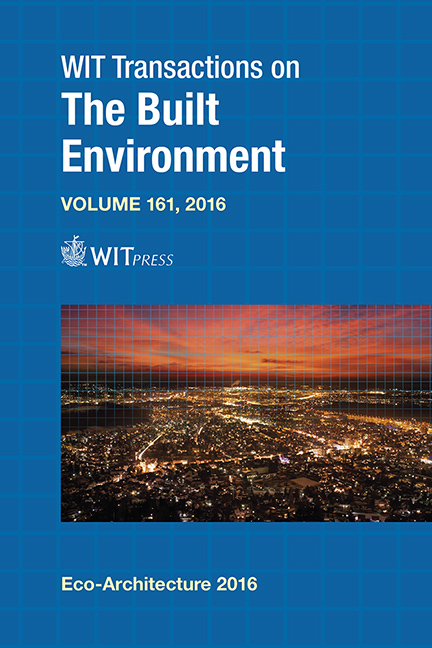New Self-sufficient Shelter Solutions For Big Cities’ Collapsed Rental Markets
Price
Free (open access)
Transaction
Volume
161
Pages
12
Page Range
107 - 118
Published
2016
Paper DOI
10.2495/ARC160101
Copyright
WIT Press
Author(s)
A. Galiano, A. Fernández, J. Antón, C. Ortiz
Abstract
Nowadays, there is a wide variety of problems in the big cities related to the urban frame and to housing. Architects have to provide solutions that not only improve people’s well-being but also have to be efficient during the building’s entire life cycle.
Within the European context, big cities like Paris, Berlin and Amsterdam have a huge demand for housing coming mainly from two different groups: people looking for temporary shelter and people looking for a more stable situation. In both cases, the need for new housing have resulted in inefficient urban developments, collapsed city centres and developed satellite cities where low and medium class people have tried to find somewhere to live, running away from infra-housing. In Paris, urban regulations set the minimum area for a rented apartment as 10m2.
The research described in this paper analyzes the current situation in big cities from two points of view: apartment sizes and medium fees for temporary shelter. It defines the average architectural conditions of the “affordable” shelter and with this data; an experimental approach for a new completely self-sufficient housing module is provided, placed in a worthless space of existing buildings (roofs). This new module is defined by its sustainability and self-sufficiency and it gives the rental market an opportunity to increase the offer of shelter to rent in the big cities. At the end of the research, the development of an analysis of life cost cycle of the new module shows it as an alternative to the existing examples of infra housing with very short periods for recovering the investment.
Keywords
microhousing, residential solutions, self-suffiency, urban strategies development, urban density





